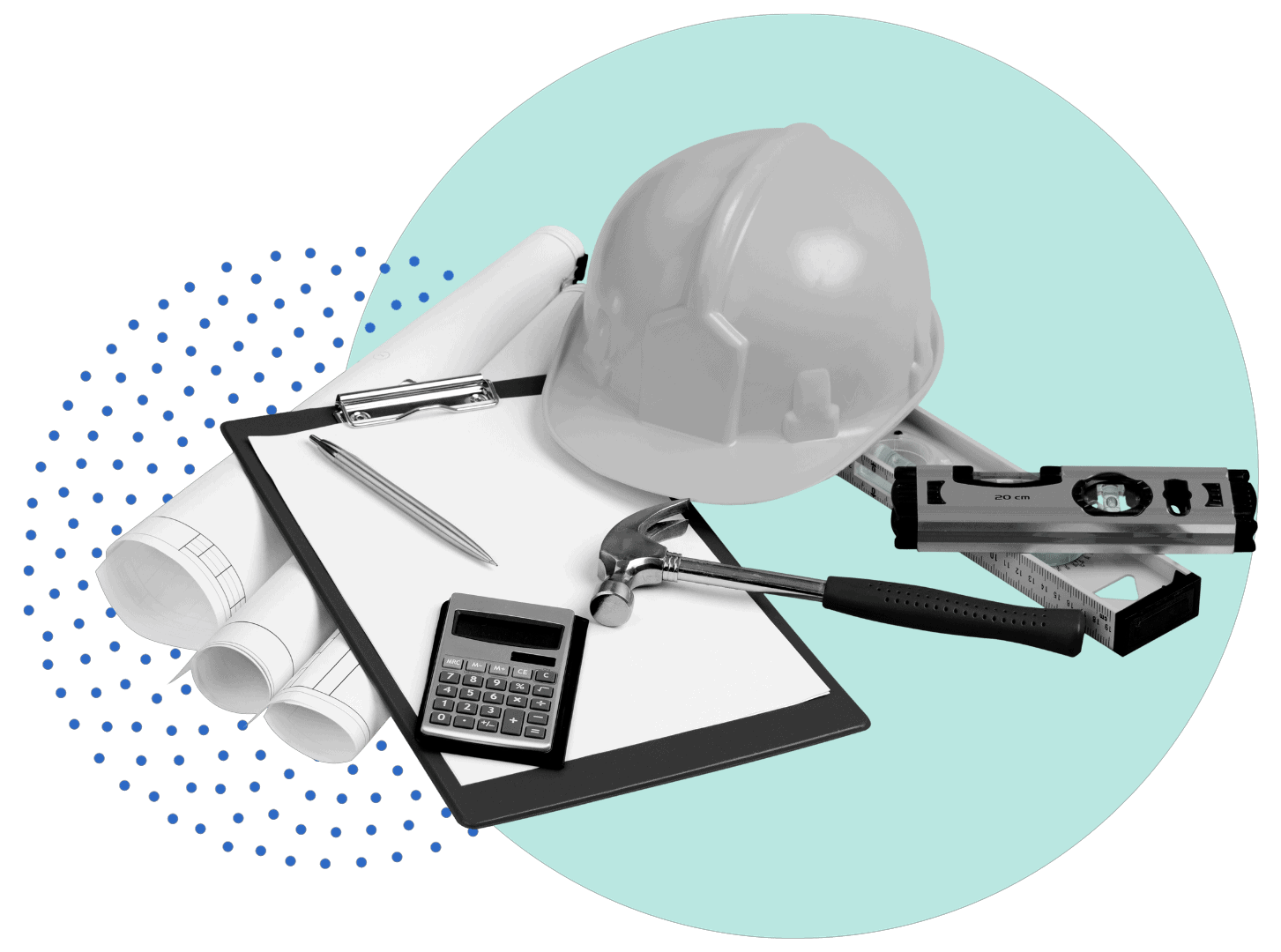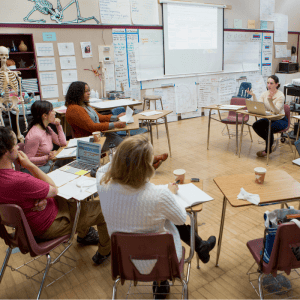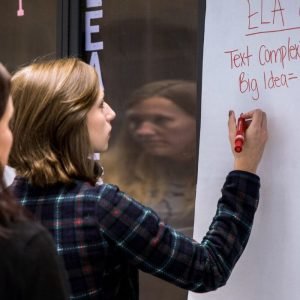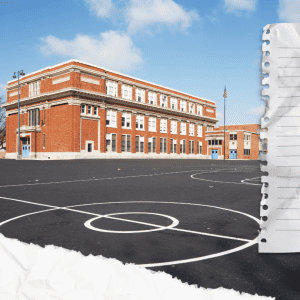
Unpacking Conditions: The Infrastructure for Excellent Teaching & Learning
11/08/2023

Our world is made up of ecosystems, both large and small, where certain factors must be in place for human systems and social structures to thrive.
 Consider a construction crew on a building site: specific technical conditions are needed for a construction crew to do their job well. Things like a project plan, sound blueprints, scaffolding and other safety structures, sufficient staffing, and well-maintained machinery determine success. There are also adaptive components: a supervisor to coordinate tasks, a team with complementary roles and specialized skills, and checkpoints to problem-solve or make adjustments. The conditions connect all the “moving parts.” It’s similar to conditions needed for an athlete to train and compete effectively – things like a well-maintained field or court, access to a coach, practice schedules, video analysis, and nutrition support.
Consider a construction crew on a building site: specific technical conditions are needed for a construction crew to do their job well. Things like a project plan, sound blueprints, scaffolding and other safety structures, sufficient staffing, and well-maintained machinery determine success. There are also adaptive components: a supervisor to coordinate tasks, a team with complementary roles and specialized skills, and checkpoints to problem-solve or make adjustments. The conditions connect all the “moving parts.” It’s similar to conditions needed for an athlete to train and compete effectively – things like a well-maintained field or court, access to a coach, practice schedules, video analysis, and nutrition support.
Within education, conditions are the key elements and resources needed at the school and system levels to best support teachers’ work. They enable an environment and culture where teachers have what they need to focus on continuously improving their instructional practice and student learning. Conditions ensure the school and district systems are working coherently together toward great teaching in every classroom, not working in silos or being stretched thin across competing initiatives.
How We Defined Our System Conditions
In 2015, we had an “aha” moment” about the importance of conditions in a complex system like a school district.
 Our initial program model used regional fellowships to help teams of teachers build skills in adult learning and coaching to develop their peers and share instructional leadership within their schools. But when fellows were back in their schools and ready to lead, they ran into barriers like limited or dwindling time, a wide range of instructional materials with variable quality, too many priorities, and insufficient support. It became clear that we needed to address the broader system to make a predictable and sustainable impact on students’ opportunities across schools and communities.
Our initial program model used regional fellowships to help teams of teachers build skills in adult learning and coaching to develop their peers and share instructional leadership within their schools. But when fellows were back in their schools and ready to lead, they ran into barriers like limited or dwindling time, a wide range of instructional materials with variable quality, too many priorities, and insufficient support. It became clear that we needed to address the broader system to make a predictable and sustainable impact on students’ opportunities across schools and communities.
This realization led us to build a development continuum based on research that explores the various aspects of supporting teachers and schools to grow their instructional practices and operations. From there, we transitioned to a partnership model focused on comprehensive instructional improvement, where we work with multiple levels of a school system, including classrooms, schools, and the overall system, to address the critical conditions for success. These enduring conditions evolved over time, bringing with them new evaluation tools and an evidence-based approach developed in more than 250 schools and 26 school systems since 2017.
The Conditions: Elements for a Thriving Learning Infrastructure
Today, our school and systems conditions framework covers three key areas: a vision for teaching and learning; aligned roles, responsibilities, and resources; and integrated learning for impact. When these conditions are in place, teachers are more likely to grow as professionals and students are more likely to have experiences that live up to their own potential. Ultimately, system conditions are akin to fertile soil in a thriving garden—essential for empowered teachers and successful students.
These are six conditions that enable and reinforce dynamic systems where teachers and students continuously learn and improve together:
- Defined Vision – Creates a clear, standards-aligned vision for instruction that integrates academic achievement, wellness, and belongingness.
- Stakeholder Ownership – Ensures the vision has community buy-in and people remain invested in it over time through ongoing engagement.
- Aligned Roles and Responsibilities – Aligns the work of teachers, leaders, and staff across the district around instructional improvement through well-defined roles and feedback systems.
- Aligned Resources – Aligns high-quality curriculum, assessments, instructional materials, time, and other resources with our shared vision for teaching and learning.
- Focused Professional Learning – Ensure that everyone, from school to district support, has professional development opportunities to learn in collaboration and grow their practice.
- Data-Driven Improvement – Uses data on implementation and impact to understand professional learning effectiveness and student progress, informing continuous improvement.
The Vision Conditions
- Defined Vision: How do the school and system articulate a compelling vision for excellent and equitable teaching and learning? At the system level, a shared vision for instruction defines high-quality teaching and learning in a way that integrates academically rigorous curriculum and assessment; social, emotional, cognitive, and identity development; and the use of inclusive and affirming practices to ensure students succeed and thrive in college, career, and life.
- Stakeholder Ownership: How are school and community stakeholders invested in the vision and instructional priorities? At the system level, key leaders communicate clearly and compellingly to manage change initiatives. They work to inform, inspire, and invest the full and diverse range of system stakeholders in the vision for teaching and learning.
The Resource Conditions
- Aligned Roles and Responsibilities: How do roles and responsibilities align with the work of improving teaching and learning? At the system level, leaders establish clear roles and responsibilities that align and invest central office departments, principal managers, instructional coaches, school leaders, teachers, and external partners in support of schools achieving the vision for teaching and learning.
- Aligned Resources: How do educators use resources and materials to support students’ learning, well-being, and belonging? At the system level, leaders determine a strategy for and guidance around what is fixed and flexible for schools and how they allocate people, time, and money to make informed decisions about improving teaching and learning.
The Impact Conditions
- Focused Professional Learning: How is time allocated for collaborative learning and focused on instructional priorities? At the system level, key leaders create a coherent system of school-based and system-wide professional learning opportunities that are differentiated by role and align with the vision for teaching and learning.
- Data-Driven Improvement: How do teaching teams and leaders leverage data on teaching and learning to set and work toward instructional priorities? At the system level, there are data systems and strategies to monitor teaching, learning, and the implementation of professional learning across schools and track progress toward goals for all staff and students.
When these conditions are in place, school systems have the tools and habits to become dynamic learning organizations where all students and adults are set up to achieve greatly together. Stay tuned for a series of deep dives on each condition coming soon to our blog. First up will be defined instructional vision.
Take Your Next Step
Use the system and school conditions overview to reflect on the strengths and opportunities in your instructional system. If you discover areas where you could use thought partnership or more support, let us know at [email protected].









